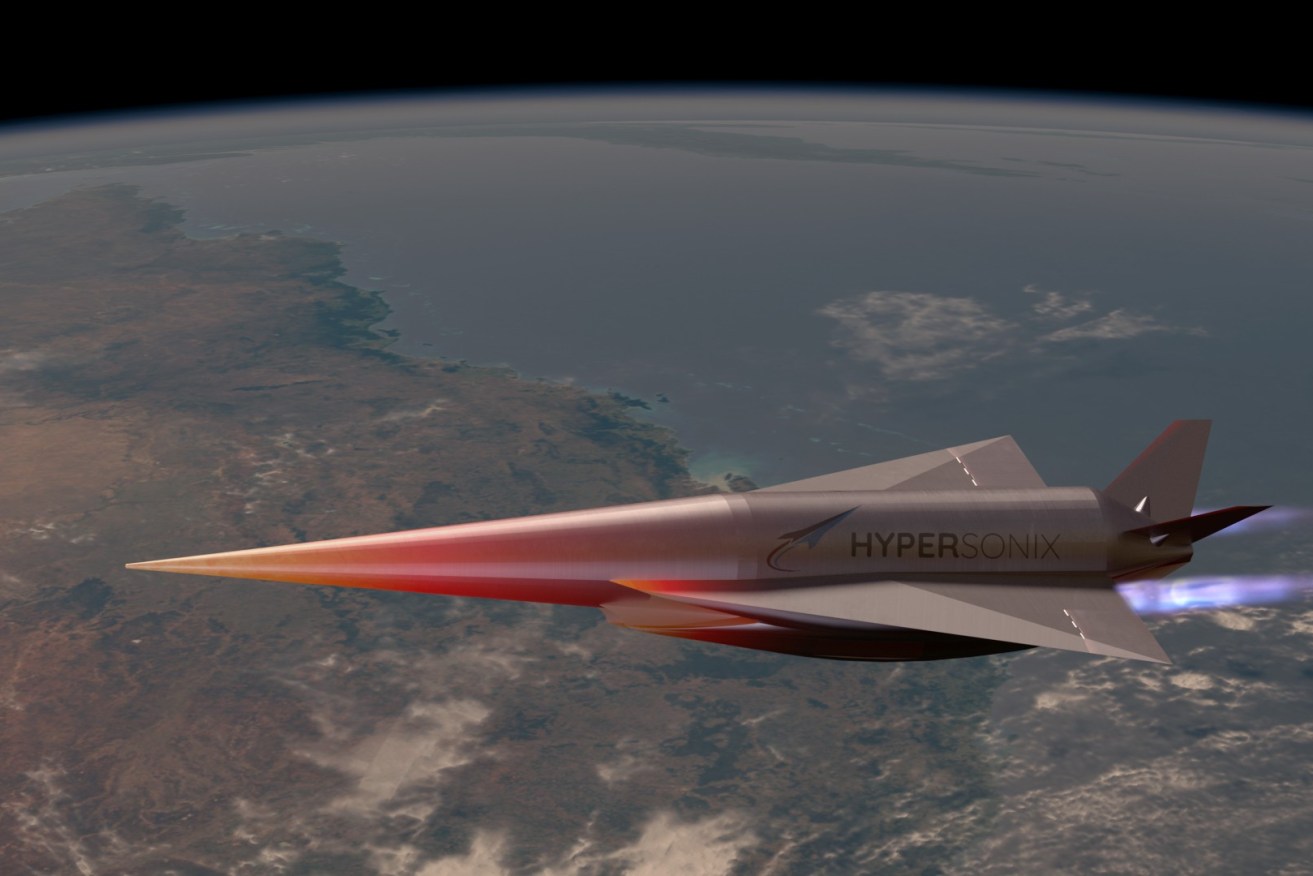University deal moves Brisbane space company closer to ‘green orbit’
Hypersonix has teamed up with the University of Sydney to investigate the manufacture of key parts of its hydrogen-powered space planes.


The Hypersonix drone
The Brisbane company has signed a master research agreement with the university to research and manufacture the components of a zero-emissions, hypersonic launch vehicle which would be capable of deploying small satellites into low earth orbit.
Named Delta Velos, the vehicle will be powered by four, green hydrogen-fueled scramjet engines, enabling carbon neutral propulsion.
It would also include the world’s first 3-D printed fixed geometry (no moving parts) scramjet engine in Australia, completed under the Australian commercialisation grant awarded to Hypersonix in August 2020.
The university would develop flight-critical components, including the launch system, as well as further versions of the scramjet engine and the vehicle fuselage at its manufacturing hub.
The Delta Velos has a planned speed of Mach 12 and a range of 2500km and would be able to land like an aircraft.
Hypersonix chief technology officer Dr Michael Smart will work with Professor Simon Ringer, a materials engineer and expert in
materials development for additive manufacturing at the University of Sydney, who will lead the project.
“We are delighted to be working alongside such an innovative, deep technology company like Hypersonix using advanced 3-D printing processes and world-class additive manufacturing facilities for such an important challenge,” Ringer said.
“Additive manufacturing is making the previously impossible, possible. This includes the proposed manufacture of satellite-launching spaceplane components right here at the University of Sydney’s Darlington campus, situated in the very heart of Tech Central.”
Hypersonix managing director David Waterhouse said the company had received a lot of interest for its recently announced DART AE project, and would possibly involve the University of Sydney in that project too.
“We are aiming to launch DART AE in the first quarter of 2023. It is good to be busy, right?”
The joint project will commence in early 2022, with Hypersonix working in the facility to develop a series of smaller proof-of-concept launch vehicles to demonstrate the spaceplane’s efficacy.
The first of these projects will be DART AE, a technology demonstrator and small version of Delta Velos, powered by one single SPARTAN scramjet engine, with a range of 500km, that could also possibly be used as a hypersonic target drone if required.












